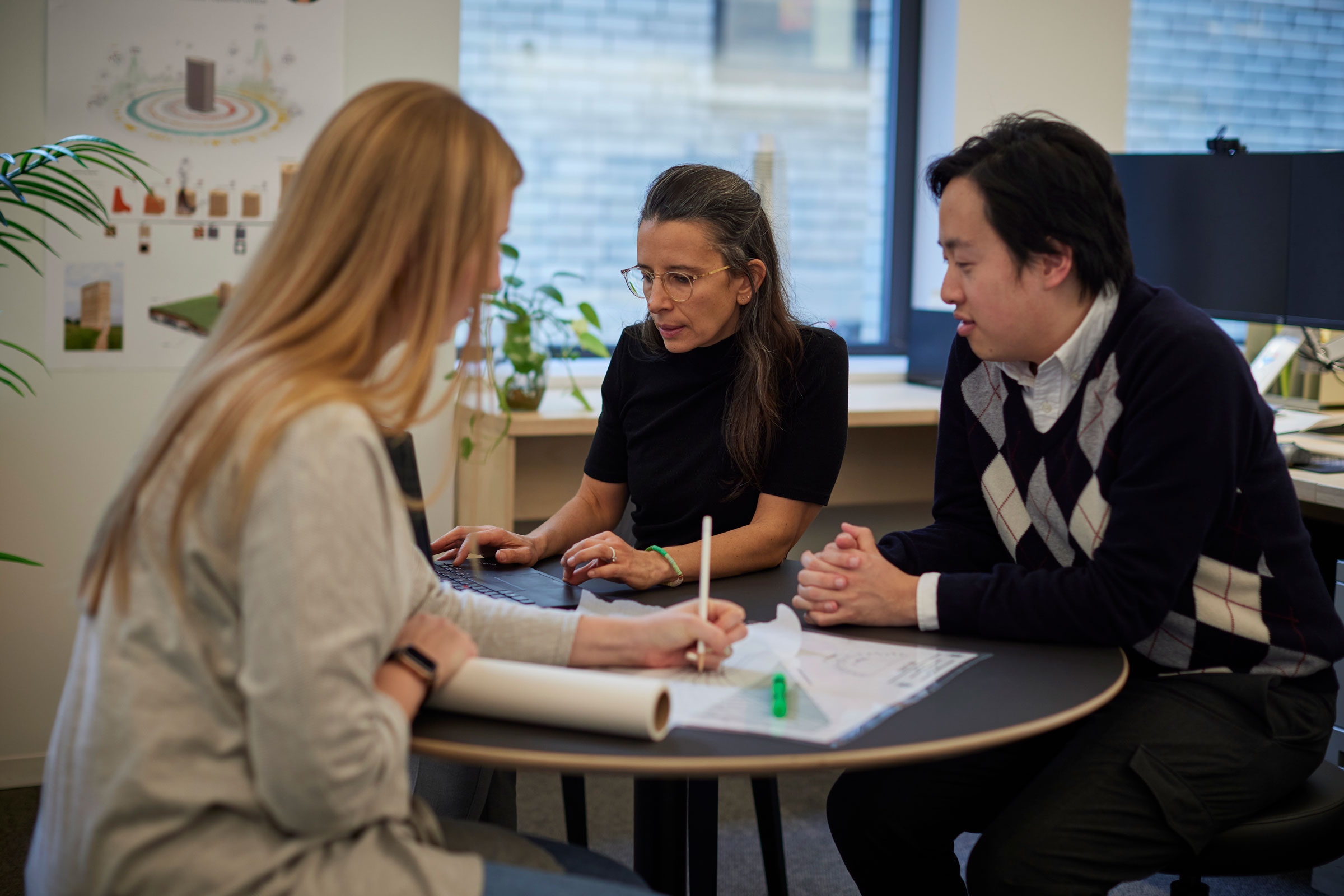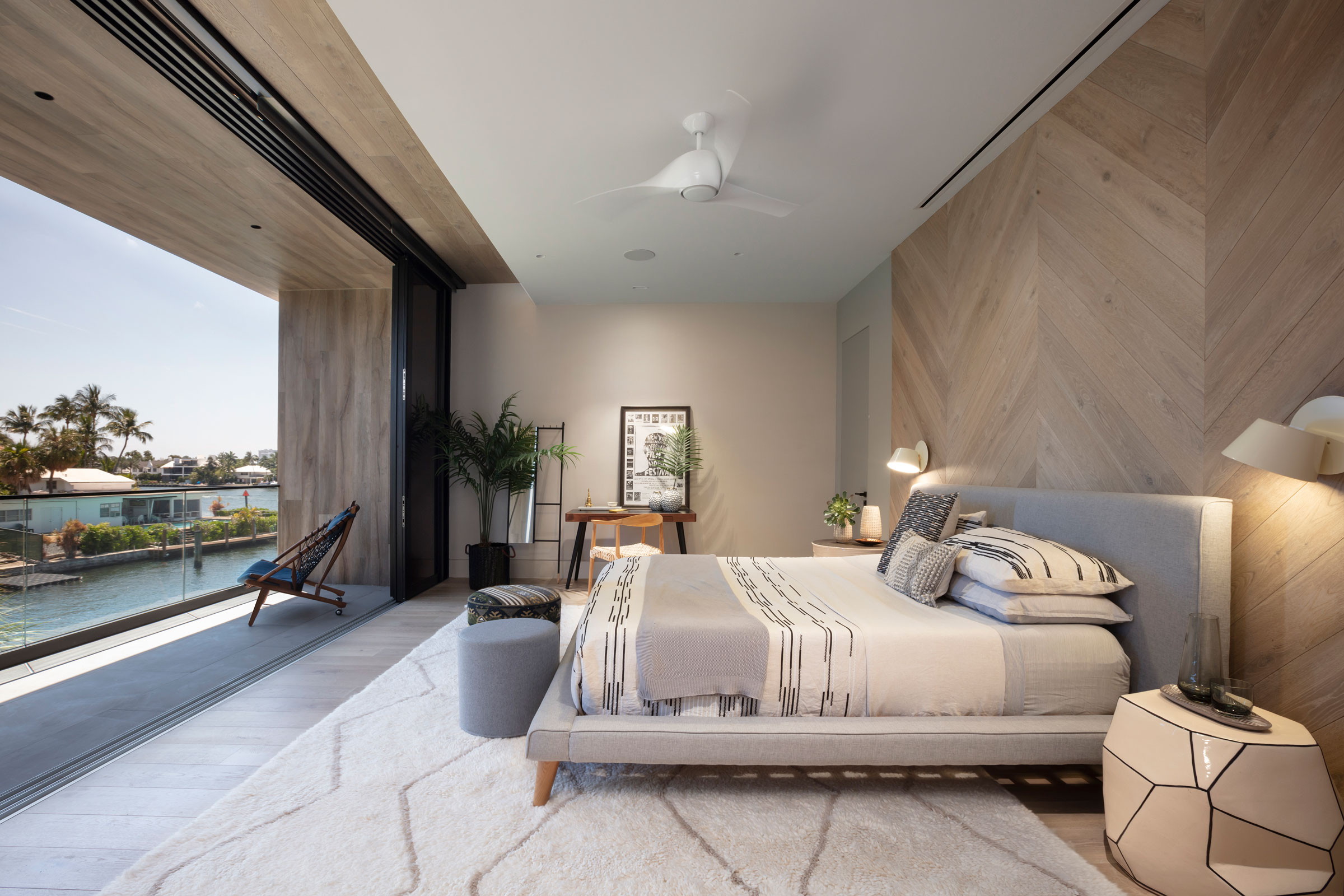Story at a glance:
- SOM’s in-house Sustainable Engineering Studio (SES) assesses carbon and transforms project outcomes.
- SES includes 20 professionals across disciplines in five cities. The studio started in Chicago from an MEP practice and has since evolved into a global operation.
- The studio tracks the embodied carbon of every project across SOM offices and recently expanded into new services like whole life carbon accounting.
An in-house engineering department and a collaborative global team focused on sustainability is part of what makes Skidmore, Owings & Merrill (SOM) a continued leader in the field of architecture, design, and engineering.
SOM’s Sustainable Engineering Studio (SES) is a 20-person interdisciplinary engineering studio focused on solutions for a sustainable future. The team of sustainability experts was established in Chicago in the early 2000s and has recently expanded across five SOM offices in New York, San Francisco, London, and Hong Kong. Three women—Marzia Sedino in Chicago, Mina Hasman in London, and Shona O’Dea in San Francisco—lead the global practice, driving innovation in sustainability across SOM projects.
Sedino has been with SOM for 18 years, starting in New York before transferring to Chicago in 2011. “We are shape-shifters,” she says. “Among five offices are a variety of skill sets. I have been here 18 years; I feel like I’ve seen it all, and yet every day I learn something new.”
SES is integrated in the design workflow as a support from day one. “We work together as part of the design team, and we are also a go-to resource. If there’s a question that comes up or something that requires our expertise, we are there to answer,” Sedino says.
She says the group continues to be driven by the opportunity to learn more and improve projects. “Applying different knowledge and skill sets to view society’s challenges is just so very inspiring. We work at such a broad scale of projects.”
Reducing Carbon
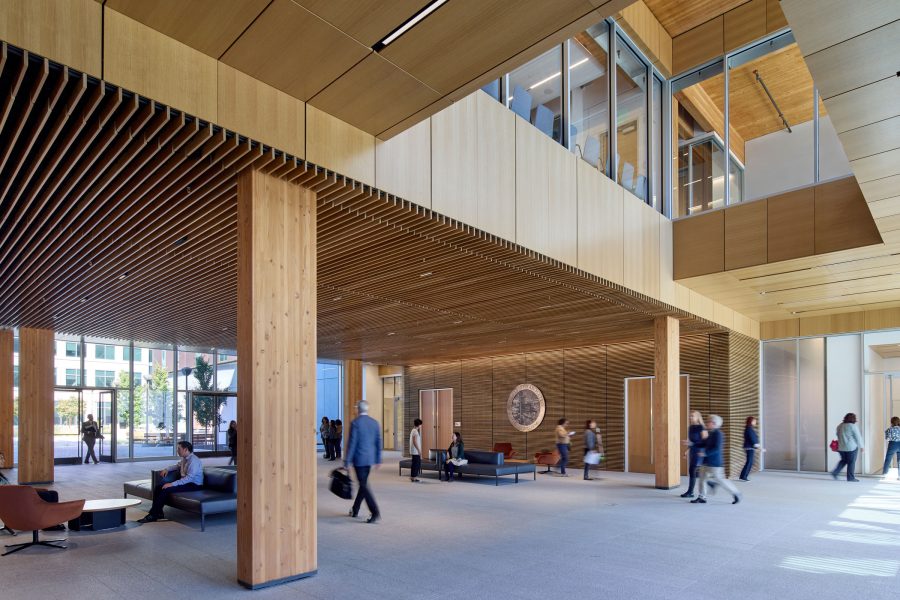
The LEED Platinum San Mateo County headquarters is the first net-zero energy civic building constructed with mass timber in the US. Photo by Dave Burk, courtesy of SOM
The SES team is involved from the earliest stages of concept design, working alongside architects and structural engineers to analyze design options and maximize sustainability. SOM is one of few architecture firms with these capabilities in-house, which has proven to be a major advantage in optimizing building performance and reducing carbon footprints.
The broad scale of work brings new ideas and expertise to each project, whether the SES team is providing an in-depth analysis on material selection, doing a whole life carbon assessment for a large project, or studying how best to design for comfort in a tiny hospital room, Sedino says.
SOM’s whole life carbon accounting process, launched in 2023, also helps the firm accelerate low-carbon building design and development. The team developed this system for evaluating and measuring whole life carbon emissions clearly and comprehensively from the very beginning of a project and throughout its life cycle. The work gives clients a holistic view of a project’s environmental impact while helping to inform future SOM projects.
Carbon accounting assessments are often performed at the end of design stages and often by different parties and to different standards, Sedino says, resulting in isolated calculations that are not comparable and cannot effectively illustrate a building’s accurate performance or inform design choices.
“Embodied carbon is a big buzzword in the industry now,” Sedino says. But SOM can take projects through the whole life carbon accounting process—looking both at embodied carbon and the operational carbon and even what happens after a project is renovated or demolished and rebuilt, she says. “That’s what makes it whole life—the entire life cycle of a building.”
Sometimes something we learn on a very small scale gets replicated on a much larger scale, which is the beauty of what we do.
While SOM offers this service to clients, Sedino says the firm tracks carbon on every project internally no matter what. “That’s how we learn the data, improve the way we design, and then apply it back to other projects,” she says. “That is a commitment the leadership made—dedicating budgets and time for that.”
Sedino says every project is different, and every journey teaches them something new they can then apply elsewhere. “Sometimes something we learn on a very small scale gets replicated on a much larger scale, which is the beauty of what we do.”
SOM has been a carbon-neutral business since 2023 and also releases an annual Climate Action Report completed by SES that informs much of SOM’s work. Much of their latest report focuses on their continued efforts to reduce carbon emissions across projects while pursuing high-impact partnerships and research.
In the past two years the SES team has also begun to offer its services outside SOM, from independent decarbonization work and climate action plans to post-occupancy evaluations and life carbon accounting services.
Case Study: San Mateo
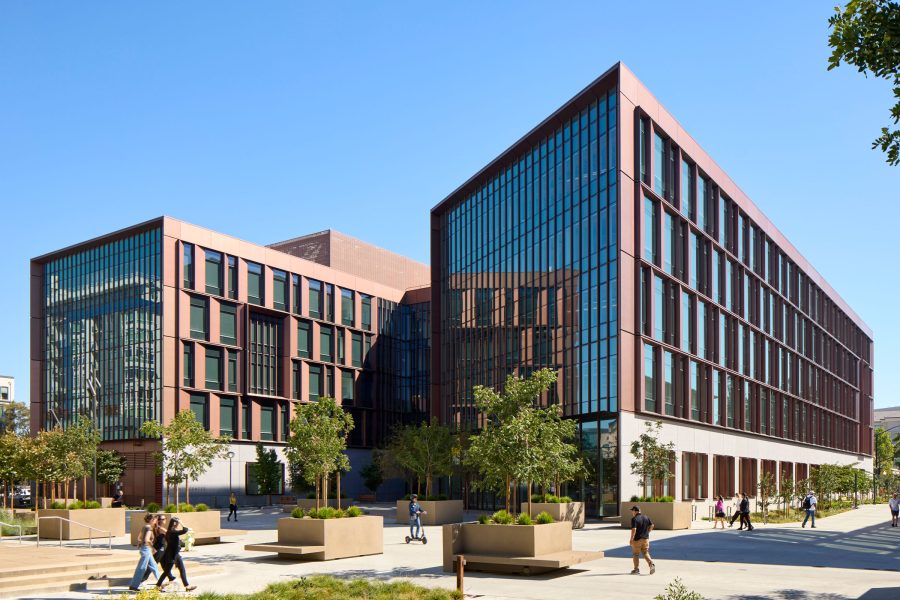
SOM designed the LEED Platinum San Mateo County headquarters and achieved an 85% reduction in structural embodied carbon. Photo by Dave Burk, courtesy of SOM
Completed in 2024, SOM designed the LEED Platinum San Mateo County headquarters and achieved an 85% reduction in structural embodied carbon. The project is the first net-zero energy civic building constructed with mass timber in the US. Given that the area is prone to wildfires and extreme weather due to climate change, the project’s mission was a sustainable one from the very beginning. “The design was focused on reducing embodied carbon as much as possible,” Sedino says.
SOM was able to reduce the amount of timber required for the structure and pared down the number of steel components. While a typical mass timber structure has 65 to 75% less embodied carbon than a conventional steel structure, the building’s structural timber design achieved an 85% reduction, according to SOM.
Eliminating materials like conventional hung acoustical ceilings, which were replaced by alternative acoustical solutions, and specifying low-carbon materials allowed for additional carbon reduction. The prefabricated timber components made the construction process faster and more precise than conventional building processes, further reducing carbon impact, according to SOM.
Case Study: Champaign, IL
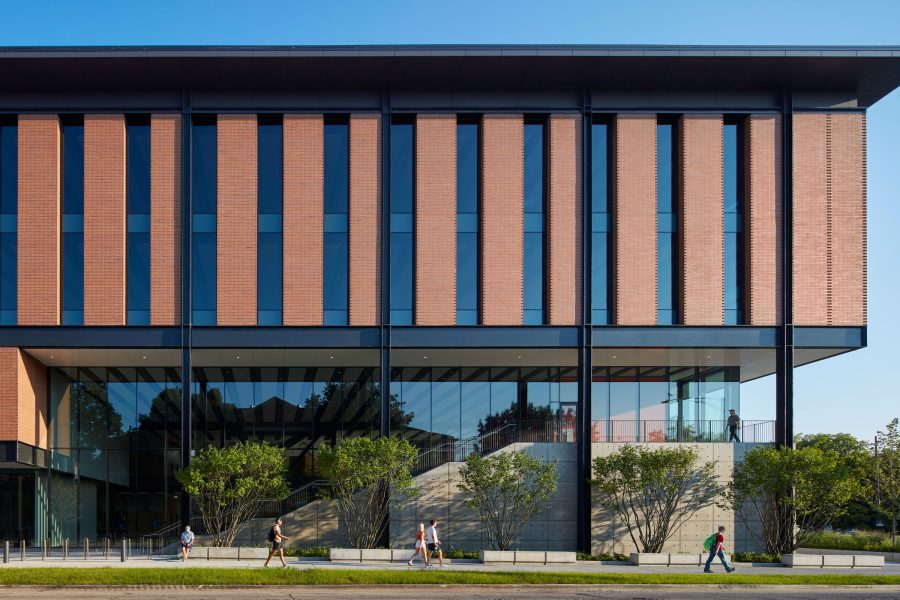
Research for structural optimization, fireproofing, and MEP was done by SOM in collaboration with engineering students and faculty at the LEED Platinum University of Illinois Urbana-Champaign – Campus Instructional Facility (CIF). The project is now part of the engineering school curriculum. Photo by Dave Burk, courtesy of SOM
SOM also invests in cutting-edge research and collaborating with universities, government agencies, and industry partners. The University of Illinois Urbana-Champaign – Campus Instructional Facility (CIF) achieved net zero operational carbon in its first year. Designed by SOM in close collaboration with the university, CIF opened in 2021 as a flexible center for learning and technology for the Grainger College of Engineering. “It’s a building to most people, but for us as designers and for the students, it’s more than just a building. It’s a learning tool and a place of discovery,” Sedino says.
Research for structural optimization, fireproofing, and MEP were done in collaboration with the university’s engineering students and faculty, and the building itself is now part of the engineering school curriculum. The LEED Platinum project includes a reduced window wall ratio, radiant systems, low-VOC materials, electrochromic glazing on the east/west facades for shading, ground source heat exchange partially funded by a grant from the University’s Student Sustainability Fund, and a photovoltaic allocation from the university’s solar farm. The building is all electric.
“The willingness on the client side to use this building and the design process to embody the engineering learning and engineering teaching was quite critical,” Sedino says. “The building comes to life to become a learning tool. That doesn’t happen very often.”
Working with an in-house engineering team from day one offered key advantages, Sedino says, and in close collaboration with dbHMS, the project’s MEP engineering consultant, those early efforts translated into meaningful results. “The fact that we were doing this on day one, that we were part of the design conversation along with the client before the project was even starting, was incredible. It allowed us to do all those things at cost, with the engagement of the students.”
Meet the Engineer

Marzia Sedino is an environmental engineer. She leads the firm’s Sustainable Engineering Studio in Chicago and co-leads SOM’s Climate Action Group Committee. She acts as an environmental consultant to ensure building and master plan designs respond to the environmental needs of their context, preserve the ecology of their site, and enhance their occupants’ health and adopts strategies to minimize their carbon footprint through their life cycle. She works closely with architects, urban planners, interior designers, and MEP engineers as part of a collaborative and multidisciplinary design team.

